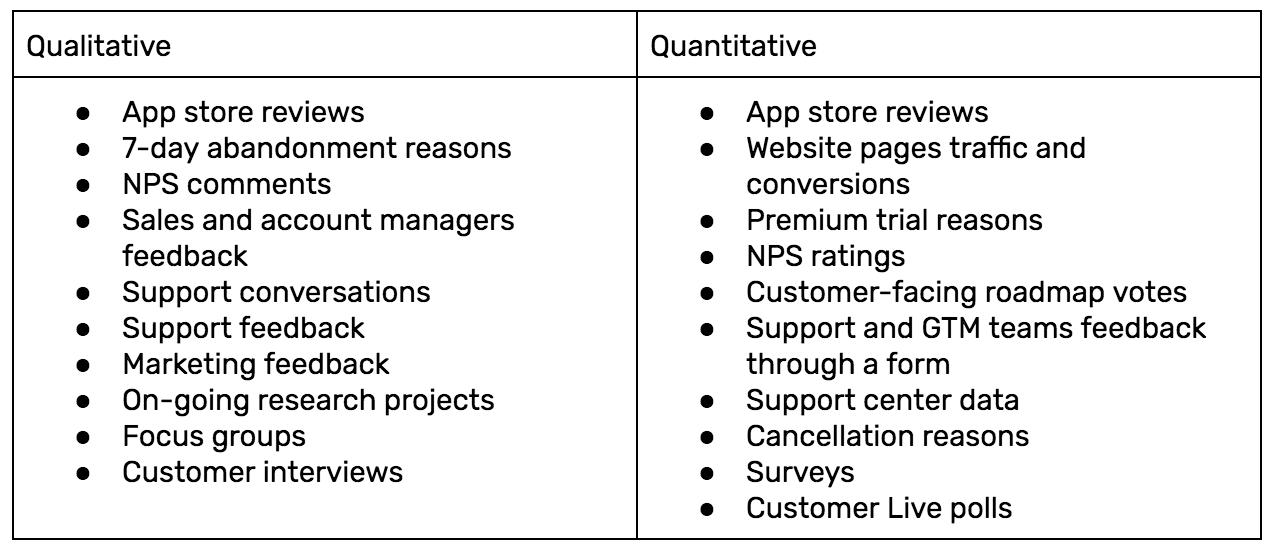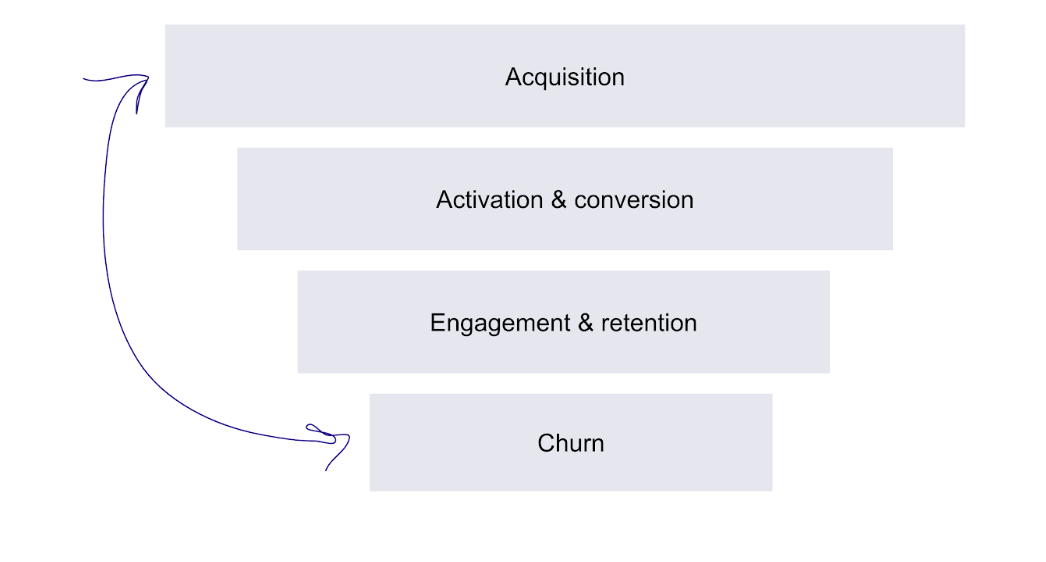Over the years, working in Product at several tech companies, I noticed what I call an “ambiance of frustration.” From sales teams to account managers, marketing teams, and more, what were they frustrated about? Well, they felt that their counterparts in Product Management were not taking their customer feedback into account, and as a casual observer, what I realized is, they’re right.
In reality, Product Managers cannot always take individual pieces of feedback onboard. That idea goes against their principles–they need to look at the bigger picture for customers and the overall problem they’re trying to solve. When I started to examine this phenomenon closely, I realized that a lot of our customer feedback was not captured, or at least, everyone in our company only viewed customer feedback from their perspective. Customer feedback doesn’t only come from unhappy customers on the phone, a meeting at renewal time, or a missing feature that lost the deal. Customer feedback encompasses much more than that.
In the tech world, we are fortunate to have access to multiple touchpoints with our customers. There’s data literally everywhere that you can pull insights from. Feedback can originate from actions in the product, on the website, quantitative and qualitative - it’s all there.
When it comes to the voice of the customer, you, as a Product Marketer, are the most eligible person in a company to centralize, recommend, and communicate about customer needs, both internally and externally. Believe it or not, there is a magic recipe that actually aligns product, marketing, and GTM around a unified company goal and customer.
So what is the recipe? Let’s start with the ingredients. Pool feedback from all of your available sources. Make sure to get a good mix of both qualitative and quantitative data, then blend. Show multiple sides of the story by pointing out who is saying what, why, and how much weight it should carry. Formalize a program and draw connections with what matters to your business. These actions help get your stakeholders on board. Lastly, don't forget to let your customers know what you are doing about their feedback, and let them know as often as possible.
I know, it sounds like a lot, so let's go through it step by step.
Ask the right questions to the right customers at the right time
1- Pool customer feedback from different sources to show multiple sides of the story
Build a survey structure along your customer journey where your customer can leave you feedback as they think of it. For our Voice of Customer program, we capture insights as early as 7 days after sign-up. Given that we have a premium trial, we also ask customers why they are trialing. Both of these points taken together allow us to better understand product-market fit and messaging in the early days of a customer’s lifecycle.

2- Formalize a program and draw connections with what matters to the business.
You have to build a rhythm of business so that your teams know when to expect the analysis, and furthermore, know when to act.
Read between the lines and identify what customers actually need
3- Map your insights back to your customer profiles and LTV.
Quantify the JTBD and unmet customer needs. Don't just surface feature requests, instead focus on the problem the customer is trying to solve, remove bias, and assess alignment with your company’s goals and product strategy.
Estimate customer impact, business value, complexity and sequence of things
4- Look at your funnel from acquisition to churn
In order to gain alignment across different parts of the business, this is essential. It helps each team to begin to understand how actions they take at the top (and bottom) of the funnel can impact customers further on in their journey.

Make sure that you have success metrics along the customer journey to measure product lovability at any time. Google’s HEART framework provides a set of 5 user-centric metrics that revolve around happiness, engagement, adoption, retention, and task success. Each metric aligns with a goal and a signal to let you know how well you’re tracking towards that goal.
5- Get input to gain buy-in.
For instance, if the feedback is related to a new feature - ask the Product Manager’s thoughts on how it fits into their roadmap. Have they thought about this feature, from this particular vantage point? Allow them to publish their thoughts on the request so they feel they’re able to add input into the work that you do.
Is this request something that we are already planning to ship? Is this issue related to a broader problem we’ve seen consistently across several sources? If we build this solution, how big is the impact? . Will it help with engagement, reach, expansion, or retention? What's the time to value? Is there a dependency that’s blocking us from taking action today?
6- Let your customers know you are doing something about it.
Your roadmap is not a secret, but it doesn’t have to be set in stone either. Make your upcoming roadmap collaborative. Be transparent with your customers, discuss it with them, understand what's critical and what a particular feature may mean for them. Be proactive in communicating not only what's coming soon, but also what you are considering longer-term
At its core, this program continues to help us bring customer feedback, information, and thoughts to the forefront of our business' conversations. Our aim was to consistently demonstrate, at scale, what our customers are saying and how they feel about our offer. We will continue to work towards this ever-illusive goal, and are confident that in the interim we’ve managed to ensure transparency and alignment across the business.
Steve Jobs once said, “You've got to start with the customer experience and work backwards to the technology.” Don’t put it off and say it’s someone else’s job. Implementing a customer-obsessed culture within your company is definitely your job as a product marketer. Don’t settle, drive internal conversations and be the voice of the customer, always.


